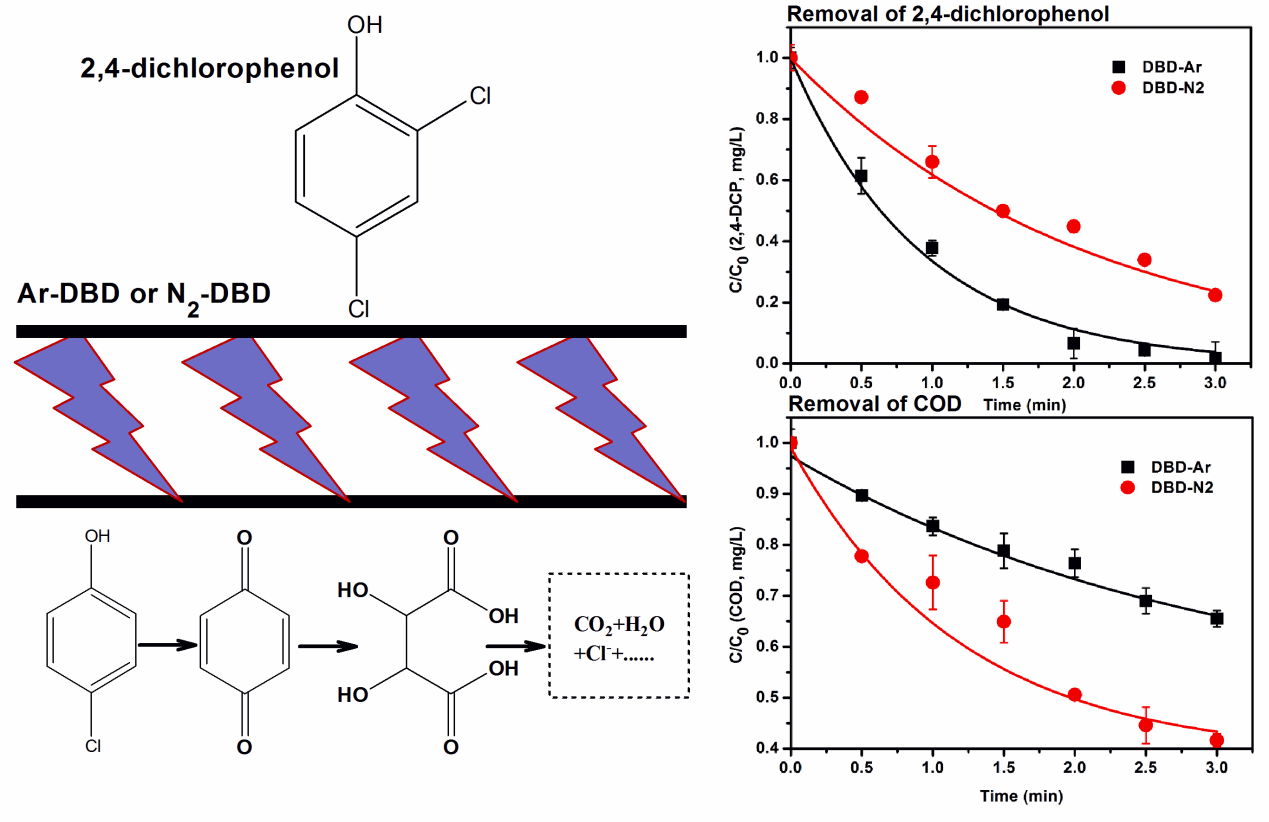
Recently, a research group led by Prof. HUANG Qing in Institute of Technical Biology & Agriculture Engineering, Hefei Institutes of Physical Science elucidates the mechanism and pathways for degradation of chlorinated phenols by non-thermal plasma. Their work was published in Chemosphere.
Chlorophenols have been extensively used in many industries such as fungicides, wood preservers, dyes, drugs and herbicides. Its large consumption in industries takes the major credit for water pollution because most chlorophenols are highly toxic, mutagenic, carcinogenic and of high persistence and bioaccumulation in the environment.
Hence, chlorophenols have been listed as the important priority contaminants in many countries and have great potential risks to human health.
However, due to the stable molecular structure and biotoxicity of chlorophenols, the conventional treatment processes are not very effective.
Therefore, researchers are trying to develop more effective technology for chlorophenols treatment. Non-thermal plasma technology has attracted special attention recently in the field of environmental pollution treatment and control. Though different plasma techniques have been documented on removal of pollutants from water, the reaction mechanisms and pathways involved are not fully understood.
In the study, HUANG's group applied the non-plasma technique in treatment of orgnic wastewater containing typical chlorophenol (2, 4-dichlorophenol, 2,4-DCP).
They discovered that the degradation rate of chlorophenol by argon-plasma was significantly higher than that of nitrogen-plasma, while the removal rate of chemical oxygen demand (COD) in the solution treated by nitrogen-plasma was significantly higher than that of argon plasma.
To interpret the effect, the researchers confirmed that hydroxyl radicals play a key role in the degradation process, and elucidated the mechanism and pathways for degradation of 2,4-DCP by non-thermal plasma.
In addition, the researchers also confirmed the ecological safety of degradation products.
This work provides a further understanding of the mechanism for removal of typical organic pollutants from wastewater by non-thermal plasma, and may also provide a better solution for improving the efficiency of pollutant treatment in practice.
The work was achieved with the collaboration of Anhui Huafeng Environmental Technology Company, and the support from the Natural Science Foundation of China the Natural Science Foundation of Anhui Province.

Effects of different plasma-working gases on the degradation efficiency of the typical pollutant by non-thermal plasma (Image by ZHANG Hong)

86-10-68597521 (day)
86-10-68597289 (night)

86-10-68511095 (day)
86-10-68512458 (night)

cas_en@cas.cn

52 Sanlihe Rd., Xicheng District,
Beijing, China (100864)

